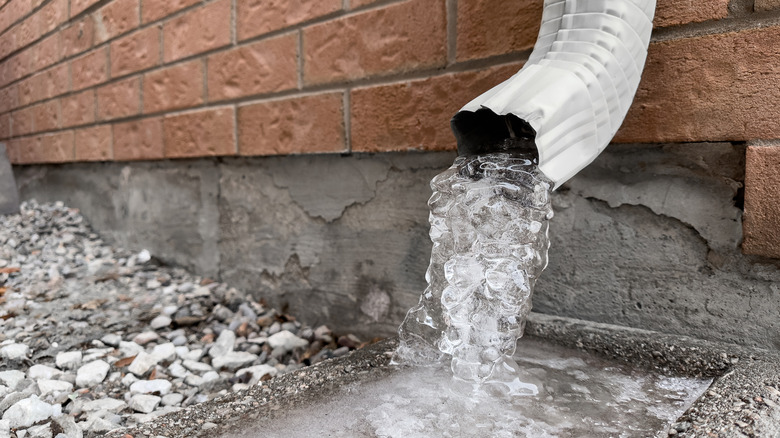The Major Downside To Not Using A Downspout To Protect Your Home
Water and your home's foundation are an unhappy union where the cracks in the relationship may be actual cracks. The incursion of water into and around the foundation is a major downside that can be mitigated by installing downspouts attached to your gutters at the top and an extension at the bottom. This combination goes a long way to ensuring that rainwater and snow melt drain far enough away from the house to prevent problems caused by water.
Downspouts attach to the gutters that run along the edges of your roof. When the gutters and downspouts are installed correctly and regularly checked for signs that they're clogged by leaf litter and other debris, they direct water away from the roof and the architectural elements like the soffits and fascia that are critical to your roof's design. Extensions added to the ends of your downspouts direct the water further from the house. These hose-like lengths of plastic slip over the end of the downspout. They're flexible so you can move them into the best position.
Water is one of the biggest threats to your foundation. Cracks in the foundation created by water intrusion cause myriad problems. Uneven floors and doors that don't close; gaps between the floors, ceilings, and walls; and mold or dampness in the basement are all possibilities. In the very worst case scenario, unfixed foundation cracks cause flooded basements and structural failure.
How water damages foundations
Hydrostatic pressure is usually the cause of foundation cracks. This pressure comes from damp soil that you may or may not be able to see. Without proper drainage, waterlogged soil and standing water after heavy rain or snowmelt create enough pressure against the foundation to damage its structure. When these cracks form, it allows even more water to seep in and compound the damage. Directing water away from the house using a gutter, downspout, and extension system is essential to prevent this damage to your home.
Ideally, the landscape around your foundation should have at least a 4% grade, or 6 inches of fall in the first 10 feet, to help water drain away from the house. The proper grade ensures that water running off your roof through your downspouts, or accumulating after a heavy rain, doesn't pool around the foundation. Even without a properly graded yard, extensions decrease the likelihood that water will be able to soak into the landscape around your home, potentially helping save your house's foundation.
If your foundation already has cracks wider than ¼ inch, you should call a professional for an inspection and repair. This is a problem that won't solve itself. The cost to repair the foundation will rise the longer the problem persists.

